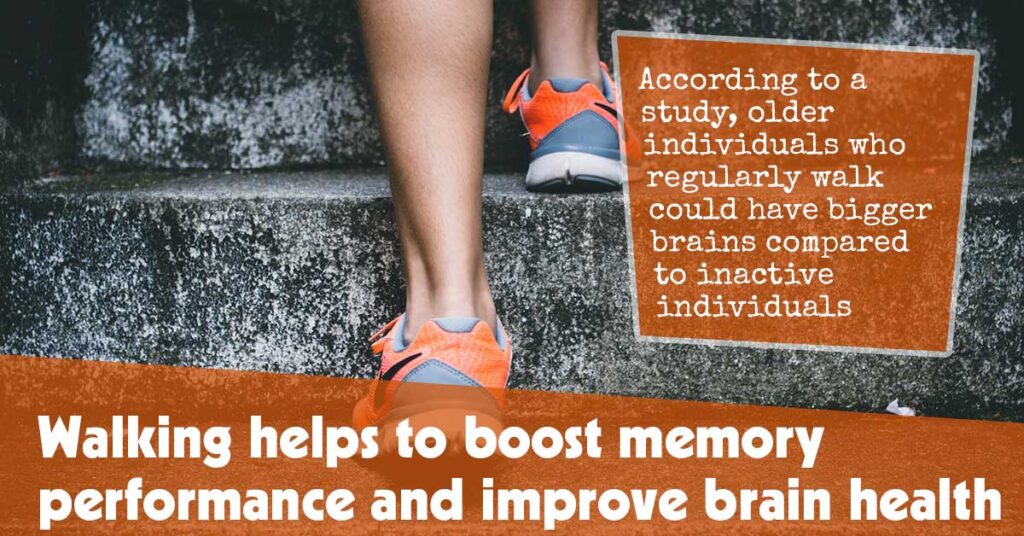Researchers have established that moderate-intensity exercise, including brisk walking, has the greatest positive impact on memory performance.
Results indicate that individuals don’t necessarily need to engage in rigorous physical exercise to experience significant long-term memory improvements; moderate exercise could have more positive results.
Research like this could be vital in creating strategies to preserve memory in older age, particularly for individuals suffering from memory deficiencies. Exercise guidelines designed to increase memory could also give a boost to students taking exams or aid with daily tasks like remembering shopping lists items.
Researchers concluded that different exercise intensities and types of rest can have direct ramifications on an individual’s recognition memory test performance.
The study suggests it’s unnecessary to exert oneself too vigorously to experience noticeable cognitive improvements. Establishing clear guidelines to enhance memory through moderate-intensity exercise such as walking could not only support those suffering from memory deficits but also be useful for society, workplace, and school initiatives.
Walking Improves Brain Connectivity and Memory in Elders
A recent study confirms how walking strengthens three of the four brain networks linked with Alzheimer’s, further supporting evidence that physical exercise improves brain health.
This study investigated recollection abilities in older individuals who possessed normal brain function as well as those suffering from mild cognitive impairment – an impairment involving mental capabilities such as judgment, reasoning and memory – which leads to reduced recall abilities in later years.
This research shows how brain networks deteriorate with age in those suffering from mild cognitive impairment or Alzheimer’s. Individuals become disconnected, leading them to forget things or think clearly; exercise such as walking can strengthen these connections.
The research builds upon prior work that demonstrated how walking could enhance brain function and reduce cerebral blood flow among older individuals with mild cognitive impairment.
33 individuals between 71 and 85 were tracked as they exercised four times every week on a treadmill for 12 weeks, reading out loud a short story that they repeated back as accurately as possible before and after their treadmill walking routines.
Functional magnetic resonance imaging was also conducted on these individuals so communication changes amongst and between the three brain networks responsible for cognitive function could be measured:
The default mode network, linked to the hippocampus – one of the first brain areas affected by Alzheimer’s – and activated when an individual isn’t focused on a specific task such as daydreaming about grocery lists – also where Alzheimer’s disease and amyloid plaques appear during tests.
The frontoparietal network involves memory and regulates decision-making when undertaking a task, while the salience network facilitates switching between networks for performance optimization by monitoring external stimuli to determine which warrant our attention.
After 12 weeks of walking, significant improvement was seen in individuals’ ability to recall stories.
Exercise could induce more synchronized and stronger brain activity, providing evidence that walking could increase its adaptability and changeability, providing hope that walking could serve as an effective method for protecting or stabilizing individuals with mild cognitive impairment and perhaps delay progression toward Alzheimer’s related dementia in the long term.
Stronger activity was evident within both the default mode network and salience network as well as within their connections – as well as between all three networks themselves.
Walking could prevent brain shrinkage in older adults, according to another study. Older individuals who regularly walk may have bigger brains compared to inactive counterparts – this equivalents to 4 years less brain aging due to exercise!
Researchers used MRI scans to measure brains of individuals ranging in activity level from inactive to very active. Their scans confirmed that less active individuals had smaller brain volumes.
Other studies have shown that physical activity may help lower the risk of age-related cognitive decline and dementia. One such research paper used brain scans to measure brain volumes of individuals. They discovered that those engaging in top 3rd highest physical activity levels experienced 4 years less brain aging compared to those at lower activity levels.
This study included 1,557 dementia-free individuals aged 75 on average who did not possess mild cognitive impairment, 296 having mild cognitive impairment, and 28% carrying the APOE gene which increases Alzheimer’s risk.
Memory and thinking tests, physical exams and interviews were administered to individuals. Questions focused on their daily tasks and physical activities as well as energy allocation to each activity and task was then calculated.
Individuals were divided into three groups: inactive; somewhat active (having 2 and a half hours of low-intensity physical activity, 1 1/2 hours of moderate physical activity or one hour of high-intensity physical activity each week); and most active (3 hours or more of low-intensity physical activity, 4 hours of moderate physical activity or two hours of high intensity physical activity per week).
Review of each individual’s MRI brain scan revealed that those most involved had larger total brain volumes compared with the less active individuals.
Once APOE gene status, sex, age, education and ethnicity/race were considered in this analysis, the average brain size for inactive individuals was 871 cubic cm in comparison with 883 for active ones; that difference represents 1.4% or nearly four years of brain aging. These results remained similar even when individuals with mild cognitive impairment were removed.
These results corroborate existing evidence showing that more physical activity can increase brain volume. Furthermore, staying physically active throughout life may help combat loss of volume.
One limitation of the study was its reliance on individual memory for recalling how long and often they engaged in physical activity; due to this design, however, the data does not prove that exercise prevents brain shrinkage – rather it simply suggests a relationship.

